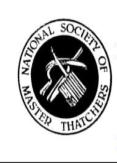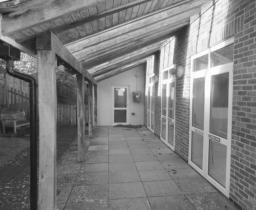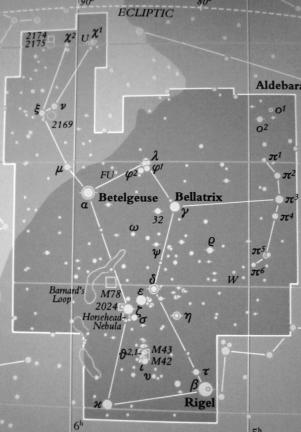




O
rio
n Neb
ula
Janu
ar
y 20
2
6
Th
e Lydde
n
Vale
N
e
ws
Happy New Y
ear!







2
Defib Runners
in order of prox
imity
to the Defib at Buckland Newton V
illage Hall
Lisa Peart 01300
34557
8
Keith
Darby
shire 0
1300
345196
Gill Nell
01300
34582
5
Sandie Stou
t 01300 345135
Dav
id Morris 01300
34540
2
Geri
Aitkenh
ead 0
7864 195619
The Ly
dden Vale N
ew
s is deliv
ered to
ov
er four hun
dred
household
s and
has
an excellent online presence v
ia The
Buckland
New
ton Community
w
ebsite
www
.bucklandnew
t
on.c
om
To promote y
our busine
ss in
thi
s sp
ace
,
please
see the
deta
ils on pa
ge 3
NOW OPEN EV
ERY D
AY
Break
f
ast Club available from
8am
f
or children aged from
2 ye
ars
.
Governm
ent Earl
y
Y
ears F
unding accepted,
non
-f
unded h
ours
charge
d
at
£4.50 per
hour
—3 & 4
year olds
£5.00 per
hour
—2
year olds
For m
ore inform
ation pleas
e contact the school
of
f
ice
on: 0
130
0 3453
93
office@buckla
ndnewton.dors
et.sch.uk

3
Lydden V
ale News T
eam
Edito
r
Am
anda M
cKenna
lyd
de
nvalle
y@gm
ail.com
T
reasurer
V
incent
M
cKenn
a
Adv
ertis
ing M
anag
er
Al
an Si
mmons
All Enqu
iries and
A
dverts
to:
lyd
denvale
adverts@gm
ail.com
Reports/
Art
icles/Interview
s
lyddenvalle
y@gm
ail.com
Distribu
t
ion
Dav
e W
h
it
e
0739
1 7088
51
Distributor
s
Pauline
Adam
s
Bridget
Bak
er
J
ohn Bak
er
Nick
i Bark
er
Gar
y Cairns
Dam
ian Brothers
Jane Coll
ins
Jerem
y Collins
Jenny J
esty
Elodie Frank
lin
David
Morris
J
ohn M
arj
oram
Jenn
y
Donnell
y
Janet
Sea
l
y
Hele
n Sim
pson
Jane W
est
Susan Mor
ing
Spare copies
available
from
The Old Chapel Store
s
The Bit at
the
Beginning …
.
As
we welcom
e anot
her New
Y
ear does an
yone else
wish th
at this
ye
ar g
oes
a little bit slower
.
2025 whizzed by
without tak
ing
a breath.
I’m
sure we all have big plans f
or 2026
– I k
now I certa
inl
y
have
lots of
projects to get
on
wit
h
– just need to
com
e out of
hib
ernation!
One of the ch
allenges to be f
aced this
year
is the
f
act that M
icrosof
t Pub
lisher
(which to
be f
a
ir is a bit
old
school)
will be no m
ore.
T
his is a prob
lem
f
or the
L
ydden V
ale News as this
is the software
we
’ve used f
or som
e tim
e no
w
.
T
here are alternatives lik
e W
ord, but it will m
ean a
lot of adjusting
and
re-sizing. I don’t claim
to be an expert by any stretch of the im
agination so an
y
help, t
ips or a
dvice on ot
her sof
tware pro
gram
m
es that wou
ld be suitable
would be gratefull
y received. We have until October
. I k
now a lot of
comm
unity newsletters are no longer produced
and that there are people who
still valu
e rece
iving a h
ard
copy
of the L
VN, (a
lthoug
h it can
also be f
oun
d
online at the
Buck
land Newton C
omm
unity webs
ite). Is
this the tim
e to stop
and re
ly
on s
ocial m
edia for our local
inform
ation? Unfortunatel
y
, this
would
exclude som
e of
the popu
la
tion.
Also, do
we
consider t
he environm
ent an
d all
the p
aper
it t
ak
es to produc
e over 40
0 copies?
T
he co
st of
producin
g it
is
alwa
ys a consid
eration
as prices f
or printing
have r
ise
n an
d we
are so
lel
y
dependent on advertising r
evenue, of
course. Em
ail
l
yddenvalley@gm
ail.com
with an
y thoughts, comm
ents or suggest
ions.
T
hank
you.
Amanda
*******************************************
***
**
**
**
***
**
*****
*****
***
**
**
***
**
**
**
*
T
he Buc
k
land Ne
wton
Comm
unity W
ebsite
www
.bucklandnewton.com
Y
our
local website f
or up
-to
-date
ne
ws, e
ve
nts, clu
bs, grou
p
s,
directori
es f
or busin
ess
es
and
services
- and inform
ation
about the
village
and
its surrou
ndings
(and th
e online vers
ion
of
the L
VN!
)
------------------------------
The
opinio
ns
i
mplied
o
r
ex
pre
sse
d
in
th
is
new
sletter
ar
e
no
t
nece
ssa
r
ily
th
ose
o
f
the
news
team
nor
the
pub
lisher
.
Alth
ough
e
ver
y
effort
i
s
made
t
o
en
sure
a
ccura
cy
neither
the
new
s
team
no
r
the
pub
li
she
r
a
ccep
t
lia
b
ili
ty
for
error
s
o
r
o
mis
sion
s.
N
either
the
new
s
tea
m
no
r
the
pub
li
sher
a
ccept
s
re
s
pon
sibi
lity
for
an
y
o
f
the
serv
ice
s
o
r
e
ven
t
s
ad
ver
tised
here
in.
N
o
re
s
pon
sibility
can
b
e
a
ccep
ted
for
unsolicited
manuscripts
o
r
ima
ger
y
.
The
editor
r
eser
v
es
the
r
igh
t
t
o
modify
contribution
s. Prin
ted
b
y Saru
m Gr
aph
ics
Adverti
sing to:
Em
ail: lyddenvaleadverts
@gm
ail.com
Advertising fees (wef 1
Apr
il 2024)
Adv
erts to be sent in W
ord
or jpeg form
ats ple
ase.
(PDF is not compatible!
)
SIZE
1 M
onth
3 M
onths
12 M
onths
12 M
onths
Co
lou
r
⅛ Page
*
£18.50
£34.00
£76.
00
£95.
00
¼ Page
*
£34.
00
£67.
50
£1
15.00
£145.00
½ P
age
£67.
50
£131
.00
£165.00
£206
.00
Full
Pa
ge
£82.00
£197
.00
£331.00
£415.00
Publication D
eadlin
e
:
T
he deadline for subm
issions is
on
the
18th of ever
y
m
onth
T
ext, Photographs, Community M
essages, Enquiries, etc. to
Amand
a at:
Email: lyddenvalle
y@gmail.com
Meetings/
intervie
ws: arra
nged
via
em
ail
* ⅛
Page
Landsc
ape pl
ea
se.
¼ P
age
Portra
it
- unle
ss full width of page,
in w
hich ca
se Lan
ds
cape
. Th
ank
Y
ou
!
T
he L
VN
is a gre
at p
lace to advertise covering
a br
oad
and
divers
e
area,
whether
you have a colour or m
ono advert!
Kindl
y m
ention the L
ydden V
ale
Ne
ws
when responding
to
advertisem
ents.
This Month’s Front Cov
er Credit: Keith Wright (see page
26)






4
WHA
T’S ON - JANUA
RY 2026
Monda
y
, T
uesda
y and Frida
y
POST OFFICE
9am-12 noon
Buckland Ne
wton Village Hall
Friday
9th January
– 12.30 pm
2
ND
FRIDA
Y
LUNCH CL
UB
(See page 12)
2026
Happy New Y
ear everyone and our first get together is again in Buckland Newton Village Hall
.
Friday 9 January 12:30 p.m.
for 12:45pm start
The menu is as
follow
s:
Chicken Pot Pie or Corn
ed Beef Hash
Apple Crumble or
Lemon S
urprise P
udding
If you w
ould like to join us and have not already done so, please
cont
act
Bridget Hodges (01300
34549
3).
*****************************************************************************************************************************
*******************
T
hursday
8th and 22nd January
- 2 - 4 pm
We will meet for 2 sessions in January
.
On Thursday 8th from 2-4pm - in BUCKLAND NEWT
ON VILLAGE HALL.
There w
ill be a
char
ge for this
session of £2 per person to
cover the cost of Village
Hall rental and tea/cof
fee.
On Thursday
22nd January from 2-4pm - we will be back at The Gaggle of Geese.
Come along and join us with whatever craft you like to do.
All crafts and skills levels very w
elcome.
Lyn Cox 01300 345739 Jane
Willis 01300 345477
*************************
**************
*************
**
T
uesday 20
th
January 1830 – 2000
BUCKLAND NEWTON YOUTH CLUBS ’P
ANTOMIME IN
A DA
Y’
- BUCKLAND NEWTON VILLAGE
HA
LL (see page 6 for details)
*****************************************************************************************************************************
*******************



5
Friday
30th January
2026- 10.30 am
BUCKLAND NEWTON VILLA
GE CA
FE
The cafe is always on the last Friday of the month.
Let’s put the dates in our brand
-new calendar
s!!
The first cafe of 2026 in on Friday
30th January
from 10.30 to 12 noon in Buckland
Newton V
illage Hall.
Everyone welcom
e.
Come along and catch up w
ith friends and neighbours after
all the Christmas fest
ivities.
Lyn Cox
01300 345739 Liza Hill 01300 345230
*****************************************************************************************************************************
******************
Dates for y
our Diary
:
Sunday
22
nd
Feb
ruary
– 4.30 pm
SERENDIPITY CONCERT OF MUSIC AND READINGS – BUCKLAND NEWTON VILLA
GE HALL (See
page
23 for det
ails)
*****************************************************************************************************************************
*******************
IMPORTA
NT - Defib and CPR practical Training Morning
Saturday
, 7
th
Mar
ch 2026 10am to noon in
Buckland New
ton Villa
g
e Hall
Led by Alan Hale, w
ho runs an ex
cellent practical session. A
nyone can attend. £5 (Runner
s free)
Contact Fizz Lewis froglewis@
hotmail.com to book a place.
*****************************************************************************************************************************
*********************
W
ednesday
21
st
Janua
ry
– 7.15 for 7.30 pm
L
YDDEN V
ALE G
ARDENING CLUB
– BUCKL
AND NEWT
ON VILLAGE HALL (See page 6)
***************************************
*************
*****
*********
*************
******************
**************
Wednesday
28
th
January
8.30 pm
PUB QUIZ – T
HE GA
GGLE OF GEESE (See page 7)
*******
******
*****
*****
******
*****
********
******
*****
*****
******
*****
*
*******
***********
*****
***********
*
*******
******
*****
*****
******
*****
*
*



6
Ly
dden Vale Ga
rd
ening Club
The
Club
did
not
meet
i
n
December,
and,
unusually
,
t
he
nex
t
m
eeting
w
ill
be
on
the
third
Wednesday
o
f the M
onth,
Wednesday 21
st
. The meeting w
ill
be
i
n Buckland New
ton V
ill
age Hall, 7.15 for 7.30
p
m
as usual and
both
me
mb
ers and
guests w
ill
be most w
elcome.
This mee
ting w
ill operate
as a “Gardene
rs
Que
sti
on Time” w
hen all attend
ing w
ill hav
e an opportun
ity
to pose
gardeni
n
g
questi
ons to
and hope
fully
obtai
n
answ
ers fro
m the Panel
of three
local ex
perts.
In addi
tion, there
w
ill be a shor
t
tal
k by
Kev
in Pope on
the problems arising from the a
rrival of the Asian
Hornet in
the
UK.
Antony
P
arso
n
*************
***
*******
***
*********
***
***
***
*******
***
*********












7
Gaggle Event
s
Gaggle Event
s
ALEX FR
O
ST
an
d
NAT
HAN
CURTIS
MA
STER
THA
T
CHERS
M
ember of
the Nation
al
Society of M
aster Thatchers.
Promp
t S
erv
ice
, helpf
ul
adv
ice
T
el. 07580 05045
3.
Email
ale
xfazer
6@msn.
co
m
Buckla
nd Ne
w
ton Vil
la
ge
Hall
Superb
light and airy
venue f
or Hire
Kitchen, Covered Patio, Stage, Bar
Area, Disabled Facilities and
Wi
-Fi
W
eddings from £220 Children’s Parties, Local Events and regular hire from £12 an hour
Call I
an Scott (Booking
Secretary
)
for m
ore info
rm
ation 01300 3
45455
or bnvillagehall@gm
ail.com - please use ‘Hall Booking’ in subject title
B N G A
UTO
SERVICES
Phil P
arsons – 25 y
ears’ experience
Specialising in: Servicing, Repairs, MOT
s
We can now MO
T v
ans and all light c
ommercials in
our new class 4 and 7 t
est bay
UNIT
8
PULHAM BUSINESS P
ARK
PULHAM
DORS
E
T
Colle
ction and deliver
y ser
vice
Email – bng
aut
oservices2001@gmail.c
om
T
el. 01300 345228
January
Break
to
give
us
and
our
team
a
break,
the
pub
will
be
closed
until
2pm
on
Thursday 22nd January
.
Knit
&
Natter
-
Thursday
22nd
January
-
the
fortnightly
crafting
social
group.
Free
to
attend.
Bring a project and perhaps some cak
e! 2.30
til 4.30pm
Pub
Quiz
-
W
ednesday
28th
January
–
ou
r
popular
Gaggle
pub
quiz.
Fun
evening
o
f
head
scratchers,
cryptic
clues
and
general
knowledge.
T
eams
of
u
p
to
6
.
£2
per
person
o
r
free
i
f
you
dine befor
e the quiz
.
Boo
king required.
*******
***********
*************************************************
***********
*****



8
Bucklan
d Ne
wton Defibrillato
r
T
he Defib Co
m
mittee
Fizz Le
wis, Sandie Stout (01300 345135
), Dian
a We
lls
and Jane
Willis
(01300
345477)
Ev
ery
y
ear we publish informa
tion about the De
fib
rillator tha
t we hav
e here in Buc
kland New
ton w
hich is
of pa
rticular bene
fit to
those w
ho have recently mov
ed into the
village.
Where
is
it?
The Defib is housed in an unlocked cupboard on the outside
w
all of BN Village Hall by the back door,
off the
kitchen. It is available for use in an e
mergency, after dialing 999
a
nd as
advised by
the para
medics. It is in full w
orkin
g o
rder, daily checked
and maintained by the co
mmittee.
Using the
Runner
Sy
stem
Any
one
can fetch the De
fib
, bu
t
w
e hav
e ‘runners’
i
n the
v
ill
age w
ho can fe
tch the de
fibr
ill
ator for
y
ou
i
f
you
w
an
t.
A
list
o
f
them
plus
phone
numbe
rs
i
s
published
every
month
in
the
inside
cov
er
o
f
the
LVN.
D
o not call the
m for any other medical emergen
cy, dial 999.
Current list in
orde
r of p
rox
imity
to hall
Li
sa Peart
01
300 3455
78
Kei
th Derby
shi
re
0130
0 3451
96
Gill Nell
01300
345825
S
an
di
e Stou
t
01
30
0 3451
35
Dav
i
d M
orris
01300 345402
Geri
Aitkenhead
07864 195619
Who can
use Def
ib?
A
ny
one can use De
fib,
as it ‘spea
ks’ clear instru
ctions abou
t w
hat to do
. Keep 999 pa
ramedi
cs
on
the
phone on spea
ker
until
a
mbul
ance a
rri
v
es.
U
seful Tips
in
an Eme
r
ge
ncy
Some or all of th
e
follow
ing sy
mpto
ms
coul
d indi
cate a need
for
CPR and
Defibril
lation
No signs of li
fe - unrespo
nsive
Pale and clam
my
s
kin, bl
ue li
ps
Not breathin
g or unusual
brea
thing
Giv
e some thou
gh
t abou
t how
our de
fib scheme
c
ould w
ork for y
ou.
Tal
k to a friend/nei
ghbour in advance about fetching the defib in case you should need it.
Attend a Training morning (see pa
ge 9)
Try to stay
calm.
Turn on house li
ghts, e
specially at ni
ght fo
r a
mbu
lance to find y
ou.
Leav
e front
door
open
Put phone
on spea
ke
r
The
school also has a D
e
fib fo
r use
durin
g schoo
l opening hou
rs
. Cont . ..
9
NB. Careline
Users
If you are a Careline User, please ensu
re your provider is aw
are of the ex
istence of the De
fib
in the
v
ill
age.
IMPORT
ANT - Defib and CPR practical Training Morning
Saturday, 7
th
March 2026 10am to noon in Buckland Newton Village Hal
l,
led by Alan Hale, w
ho runs an excellent practical session. Anyone can attend. £5
(Runners free
)
Contact Fiz
z
Lew
is froglewis@hotmail.com to boo
k
a place.
**************************
*********
***
***
***
*******
***
*********
***
***
***
*******
***
*********
***
***
***
*******
***
*********
Buckland Ne
wton Community
Car Scheme – Ho
w thin
gs have changed
The
BN Com
munity
Car Scheme w
as set up
in 2
014 and w
as ori
ginally
aimed at suppo
rtin
g indiv
iduals
over 50 years old w
ho lived in the
parish
of Buc
kl
and New
ton, w
ho may
h
av
e been at risk of rural
isol
ation. The ai
m w
as to
suppor
t them
ge
t to
med
ical appointments, assist w
ith shoppi
ng,
ta
king th
em to
hairdressers e
tc. Volunte
er d
rivers supported thes
e indiv
iduals.
The
intention w
as nev
er to
ta
ke aw
ay
business
fr
om the local bus
se
rv
ice or in
those day
s local
tax
i
serv
i
ce
s.
In 2018
we covered 195 re
quests fo
r li
fts but in 2024-25 only 45. M
ost of the journeys back in 2018 w
ere
over to Cerne Abbas surgery for doctors’ appointments – how
life has cha
nged
in so few
years!
The
sche
me
has
evolved
over
the
years
t
o
suppo
rt
the
needs
o
f
communi
ty,
especially
afte
r
Cov
id
and
now
w
e find that many medical appointments are further afield with journeys
i
n the last year
t
o Tau
nton
and Boure
mouth
hospital
s
a
s w
el
l as dentis
ts on
Portland.
Cli
ents
now
need
to
re
gister
w
ith
u
s,
and
they
pay
an
annual
£10
subs
crip
tion
to
be
able
to
use
the
service.
W
e as
k fo
r
a
do
nation
o
f 50p per mile tra
velled
, t
o
g
o tow
ards paying for the
driv
ers’ cos
ts,
insurance e
tc.
W
e
as
k fo
r
a
t least 48
hrs
notice
o
f r
e
ques
ts for
journey
s.
Volunteer d
rivers give up their ti
me freely to
supp
ort the
sche
me, and they o
ften suppo
rt othe
r activ
ities
in the village too
. All are DBS checked and
are issued w
ith hospital parkin
g permits and receiv
e 45p per
mil
e they
hav
e dri
v
en.
Although
we lost our
bus
serv
ice a
few
y
ears ago,
the
re is
stil
l a
tax
i comp
any
based in Cerne
Abbas
w
ho may be able to
assi
st, althou
gh
they general
ly do airport runs. Alte
rn
ativ
e transpo
rt options were
investigated by the Parish Council, but they w
ere not viable due to cos
ts. A lette
r has rece
ntly
been
written to Edward M
orrello, our local MP, who is apparently following up parishioner concerns about the
lack of publ
i
c t
ranspor
t.
M
any
community
car
sch
emes only
cov
er journey
s to
medical appoin
tmen
ts and a
re stru
gglin
g to fi
nd
volunteer driv
ers. In our last finan
cial year, the li
fts w
ere cov
ered by
10 v
olunteer driv
ers, how
ev
er we
also had 5 drivers who had to stand dow
n at various ti
mes of the year, du
e to various reasons. Although
we don’t w
ant to, we may in future have to priori
tise the type of li
fts we can cover.
If y
ou feel that y
ou w
ould like
to
know
more
about either usin
g the
car sche
me as
a client or
as
a
volunteer driv
er, then ple
ase conta
ct Sheila Crouch on 07733
849264 or e
mail on
bncarsche
me@
gmail.co
m.
***********************
***
*********
***
***
***
*******
***
*********
***
***
***
*******
***
*********
***
***
***
*******
***
*******









1
0
Hard
Woo
d Logs for Sale
Ash, Beech and Oak
seasone
d logs
F
ree d
elivery within 20 mile rad
ius of
Buc
kland
Newton
Dumpy Bag
£1
00
Conta
ct
01963 23733 ~ 01300 345338 ~ 07903 5357
45
PA
TRICK NEEDHA
M
NCH & ND in
Arboricu
lture
T
ree
Surgery
, W
oodland
Ma
nagem
ent
Hedg
e T
rim
ming
Chipp
ing
Se
rvic
e
N.P
.T
.C. Qua
lif
ie
d (cha
ins
aw & spr
aying
use)
Full
y Insured
TEL:
07899 92454
5 or
01258
817382
Bar
tletts Ca
r
pets
Carpet and viny
l fitting
specialists
supply and fit or fit only
.
Home selection serv
ice available.
We of
fer a whipping service
, m
ake your of
f
cuts
into
mats.
Of
fice - 01963 365724
Mob - 0796884
562
3
PESTWRI
G
HT
Traditi
onal M
ole
Catc
her
Rats, Mic
e, Squ
i
rr
els etc
BPC
A qualified and insured
Call Jim
on
07
854
395
1
12
www.pestw
right.co.uk

1
1
Winter fee
ls like a quieter time in nat
ure. Lo
we
r tempe
r
atures an
d
less
day
light make a lot of
wild
life less
a
ctive, but many
species are st
ill eas
y
to
spot and
will appreciate a helping h
and in chilly
conditions.
Plant a h
edge: W
inter is tree plantin
g season and
if
you h
ave th
e space, cre
atin
g a m
ixed hedge
or shrubb
y
border of native species ca
n m
ak
e an enorm
ous dif
f
erence for wildlif
e. Plants
will
off
er vital shelter f
rom
the
elem
ents, dense, spin
y
bra
nches are gr
eat
nesting sp
ots and
abund
ant flo
wers and berries
will f
eed all m
anner of
bees, b
utterf
lies, b
irds and
m
ore.
Suppl
y a sm
orgasbord for m
ost of the year by selecting species caref
ully.
Black
thorn and
hawthorn
are great
choices for earl
y spring blossom
. Good optio
ns to pro
vide
polle
n, nectar a
nd f
ruits
f
or late spring t
hrou
gh to autum
n
include
dog r
ose,
f
ield m
aple,
guelder rose,
dogwood,
bram
ble, wild honeysuck
le
and
com
m
on ivy. Man
y of the
berries, inclu
ding t
hose
of black
thorn and hawthorn
,
will last
we
ll
into winter
.
Help bird
s find a home:
The spring breeding season
is just around the corner and as soon as the new
year
dawns,
birds
will be scouting for hom
es to raise their c
hick
s. W
inter is a good tim
e to give exist
ing nest
boxes
a
good clean in pre
parat
io
n,
or to put up ne
w o
nes.
Leav
e se
edheads standin
g:
As pla
nts die back
, dela
y
the tradit
ional
garden t
id
y
up and choose to
le
ave so
m
e of
the seed
hea
ds stand
ing. T
he seeds
will
provid
e
f
ood for birds and sm
all m
am
m
als, and hollo
w stem
s and intricate seedhe
ads are
valuable shelter f
or over
wintering ins
ects lik
e
ladybirds
.
T
he
y’ll add structure
and
interest to
your out
door space for winter t
oo, with comm
on plants lik
e angelica
and sea holl
y
look
ing as st
unning
dusted with f
rost as
the
y do in flower.
Alt
ernativel
y, cut st
em
s back
and leave sm
all piles in quieter areas.
Avo
id turning the compo
st heap:
T
urning
your compost won
’t
hurt
wildlif
e, but
it
will disturb an
y hibernating
slow worm
s, frogs or hedgehogs
from
their winter
slum
ber. Moving com
post around
in cold conditions
will lose som
e of
that all
-
im
portant heat n
eed
ed f
or
decom
position too
, so it
’s best for ever
yone to wait un
til
spring when the
weather
warms up and an
y residents
have m
oved
on.
M
onitor hedgehog feeding stations:
Hed
geh
ogs ca
n hibern
ate f
rom
around October to Apri
l b
ut m
a
y still
be out
and about in earl
y
winter
if
condit
ions are m
ild. T
hey may
also wak
e up for brief periods to search for f
ood as f
at
reserves deplete, especially
if
they
were born
later
in t
he
year
, so it
’s
wort
h leavin
g som
e food underco
ver at
all
tim
es. A bowl of cat biscuits will sta
y dr
y and
edible for at least a
week
.
T
haw ic
y waters:
W
hen tem
peratures drop, rem
edy frozen bird baths whenever
possible so wildlif
e can acc
ess
drink
ing and bathing water. W
hen surf
aces freeze, defrost them
by carefully pour
ing warm
water
over them
–
but
not boiling
water as co
ntain
ers could crack
. For ponds,
tr
y f
loat
in
g a
ball
in the
wat
er to m
aintain an airhole for
f
rogs and newts that m
a
y
b
e hibern
ating
in the dept
hs.
M
ake a toad abode:
T
oads don
’t hibernate in winter
but spend m
ost of
their tim
e burrowed in
to m
ud or com
post to
conserve energ
y,
em
erging to f
orage during m
ilder sp
e
lls. Give them
a read
y
-m
ade shelter
with a large, uptur
ned
plant p
ot in a sh
ad
y spot
. Place
it upside down over soft soil
with o
ne
edg
e pro
pped up for to
ads to cra
wl under
and burrow or
la
y the pot on its side and
half
fill it
wit
h soil, m
oss or leaves.
Feed the bird
s:
As tem
peratures plumm
et and food becom
es dif
ficult to find, a helping hand can m
ak
e all the
dif
ference for birds. Keep tables and
han
ging f
eed
ers toppe
d up with ca
lorie
-rich supp
lies
lik
e fat balls, pean
u
ts
and sunflower h
earts to
help them
replenish the
extra energ
y they
use to k
eep warm
.
Plan ahead for f
uture winters by plant
ing a tr
ee and
letting nat
ure pro
vide.
It
’s the
perf
ect tim
e to pla
nt a
nd
one of
the m
ost satisf
ying and has
sle
-f
ree wa
ys to of
f
er valua
ble f
oo
d an
d she
lter f
or a
whole host of
wildlif
e.
w
ww
.woodlandtrust.or
g.u
k
***********************
***
*********
***
***
***
*******
***
*********
***
***
***
*******
***
*********
***
***
***
*******
***
*******
1
2
Village
History
Are you interes
ted
in join
ing a group
to
re
search
a
nd reco
rd the history of Buckland New
ton?
We
a
re loo
kin
g for like-minded people w
ho are w
illing to
put so
me time
an
d effort into
re
searchin
g,
presentin
g and
ar
chiv
ing the
history
of the pa
rish, and to
ma
ke
it readily
accessible to all on
a
long-ter
m ba
sis.
Initially we hav
e though
t of four areas
fo
r resea
rc
h:
1.
The period from 1840 to 1939. There is a lot of information readily available in the
fo
rm of tithe map
,
census and
othe
r da
ta. This could be analy
sed an
d presen
ted to tell the
s
tory
of the v
illage ov
er th
at time
pe
ri
od
.
2.
Prior to 1840, back to medieval times and beyond, there
is mate
rial to
be researched
. This w
ould
probably
mean
time be
in
g spe
nt
on
-l
ine
or in
the Dorset
H
istory
C
en
t
re,
fo
r ex
ampl
e.
3.
Recording the history of the parish from the Second World W
ar to the present day for future
gene
rations before it is l
ost. This could be recording peoples’ memories, taking pho
to
graph
s, reco
rding
importan
t ev
ents, e
tc.
Tracing the
history of individual buildings in the
p
arish.
We
app
reci
ate tha
t sev
er
al people ov
er the
y
ears hav
e researched
v
arious aspect
s of Buc
kland
New
ton
history. If those
people are willing to sha
re their w
ork, we think it w
ould be good
to
asse
mble it in a
common
for
mat and ma
ke it av
ailable to bo
th p
res
ent and
fu
ture
genera
tio
ns.
If y
ou are in
teres
ted, in the firs
t ins
tance
contac
t either:
Andy
Waring at andywaring12@gmail.com or
John Ba
ker
at
johnba
ker
386@outlook.co
m
Family
History
On a slightly different ma
tte
r –
Are you interested
in researching your family history, but don’t know
w
here to start or w
ould like some
he
l
p?
Wo
uld
you like to join a self-help group to perhaps meet once a month, w
here those w
ith experience
could help those w
ho are jus
t sta
rtin
g ou
t?
If so, w
hether you are starting out or you have skills to offer, please contact me, John Baker, at:
johnba
ker386@ou
tloo
k.com or 01300
345386.
**************************
*********
***
***
***
*******
***
*********
***
***
***
*******
***
*********
***
***
***
*******
***
*********
2
nd
Friday
Lunch Club
December’s Christmas lunch in the
Village Hall w
as
WONDERFUL. We
had a fantas
tic traditional
meal, and
everyone agreed it w
as one of the
best ever.
Secret Santa
w
as very generous, and everyone received a present. As al
w
ay
s, our v
olunteer
helpers w
ere very busy be
fore, during and afte
r th
e meal
itsel
f.
We
do
appreciate
the w
or
k they
put in to
giv
e us s
uch a lov
ely
time, and we were pleased tha
t
for
o
nce
they
w
ere abl
e to
si
t do
w
n and ea
t w
ith us.
Jane
t S
eal
y
(Photos
opposi
te)



1
4





1
5




1
6
Birthday
Bells
On Sa
turday 6
th
December the Buckland New
ton Bell Ringers
(and friends) ran
g a quarter peal to
celebra
te Pe
te
Willis' 96
th
Birthday. Pete is curren
tly the oldest resident in Buckland New
ton
and since his 90
th
it has
become a bit of a
traditio
n to
ma
rk the
day
with a qua
rte
r peal.
Following a day of celebrations with his family
, Pete listened to the
ringing from the
comfort of his home w
hilst Jane rang the Treble,
her fi
rst quarter
peal in o
v
er a y
ear!
Pete on
his 96
th
Birthday The
band – Nick Baker, David Brooks,
Tim Filtness, Jan Keohane, Jane
Willis,
Will Burnett
***********************
***
*********
***
***
***
*******
***
*********
***
***
***
*******
***
*********
***
***
***
*******
***
*******


1
7
Bucklan
d Ne
wton Youth Club
I w
rite
this at
the end
of December
as
the w
eathe
r forecas
t is
predic
ting a
cold snap and
possibly
snow
at
the be
ginning of Janua
ry
2026. It there
fore
feels
a
ppropriate
tha
t Buc
kland
New
ton Youth Club's
Pantomime in a Day in 2026 w
ill be "A Touch of S
now
White". The Pan
tomime w
ill be performed on
Tue
sday 20 Janua
ry w
ith the
curtain risin
g at 1830 in Buc
kland New
ton Village Hall. Ti
ckets are £5
a
family
or £2
.50 each
and
pre-ordering is stron
gly
recommen
ded - it w
as a s
ell-out perfor
mance
last
y
ear!
In Feb
ruary BNYC w
ill be ta
kin
g pa
rt in an art p
ro
ject to
produ
ce promotio
nal materials fo
r the Club
, think
"Liv
ely
, Fun, Chaotic
, C
razy
!" w
ords tha
t the
y
oung people hav
e used to
describe BNYC.
The
pro
ject w
ill
continue into
the
hal
f-term, w
hen the Yr 8s+ w
ill also have the oppo
rtunity
to go
on w
hat is be
comin
g an
annu
al
resi
dential
in Lon
do
n.
And then in M
arch, BNYC w
ill w
ork w
ith Bucklan
d New
ton School to take
part in Buc
kland New
ton's first
Children's Litera
ry
Festiv
al. This w
ill be a Literary
Festiv
al w
ith a di
ffe
rence
!
Thin
k of a c
ross
betw
een
Wi
nd
in the
Wi
llow
s and Prokofiev
's Peter &
The Wol
f, the children and
young people w
ill:
w
/c 3 M
arch:
Write the story, w
orking with the C
reative
Wri
ting Charity, B
ank of Drea
m &
Night
mares
(bas
ed in Bridport).
w
/c 10 M
arch:
Work w
ith a young illustrator to
illustra
te the story.
w
/c 17 M
arch:
Wo
rk w
ith local musicians to put th
e sto
ry to music
.
w
/c 24 M
arch:
Wo
rk w
ith Jo Simons, Artistic Director to perfo
rm the
s
tory - on Thu
rsday
27 M
arch
at 1830
at the
Village Hall.
But BNYC w
ould like to
ex
tend the o
ffe
r of the Literary
Festiv
al to ev
eryone in the
Com
munity
so th
ere
will be opportunities for
o
lder people/fa
milies to
co
me
to
gethe
r and
sha
re
their boo
k club/readin
g gr
oups,
compete in a scrabble nigh
t and
read
sto
ries at an afterschool
ev
ent on Friday 20 M
arch.
You could also
come
up with your ow
n ideas for an event or ac
tiv
ity
in M
arch connec
ted to reading - w
hat
coul
d y
ou
do
?
K
ate P
ari
sh
*************
***
*******
***
*********
***
***
***
*******
***
******




1
8
Sudoku by m
athsphere.c
o.uk
January
Quiz
1.
In what year w
as the
album “The
Rise and
Fall of Zi
ggy Stardust and the Spiders fro
m M
ars” by
Dav
i
d Bow
i
e rel
eased?
2.
In what year was British T
elecom separated from the Post Office?
3.
Whose w
orld reco
rd in the
200m w
as beaten by
Usain Bolt in 2008?
4.
How
many
named
lines are
the
re in the
Londo
n Under
ground?
5.
What w
as the w
orld’s largest landlocked country be
fore the
dissolution of the USSR (now
the
2
n
d
largest a
fte
r Kaz
a
khstan)?
6.
What w
as Queen Victoria’s name when she w
as born?
7.
Wh
at w
as the na
me of the tow
er bloc
k w
here Del and Rodney
Trotter
liv
ed in Only
Fools and
H
orse
s?
8.
What w
as the bestselling new
car in the UK in 2024?
9.
Wh
at is ichthyology?
10
.
Which sho
rt sto
ry w
riter became the
fi
rst Can
adian to w
in the Nobel P
rize in Literatu
re?
By
S
i
m
on S
pe
ncer
**************************
*********
***
***
***
*******
***
*********
***
***
***
*******
***
*********
***
***
***
*******
***
******
W
HERE W
ILL
Y
O
U FL
Y
TO
- OR
FROM
?
BEN
BECUL
A
BELF
A
ST
BOURN
EMOUT
H
BRI
ST
OL
CA
RDI
FF
EDIN
BURGH
EXET
ER
GA
TW
ICK
GLA
SGO
W
HEA
THROW
LUT
O
N
L
YDD
MANC
HEST
ER
NEW
QUA
Y
NORW
ICH
SOUT
HAMPT
ON
SOUT
HEND
ST
ANSTED
ST
RONSA
Y
T
EESI
D
E


1
9
Cross
word and
Words
earch
by
C
arole Spenc
er
Ac
ros
s
1
.
Excha
nges
abo
ut a
thou
sand bogs (6)
5.
Portra
y
def
end
er as an
inconven
ience (
8)
9.
A
little bit of
wea
ther (8)
10
.
Getting read
y
to dr
ive (
6)
1
1
.
Ok
then,
no chav can be a pla
ywright (5
,7)
13
.
In th
e first instance
plac
e out
going su
bm
ission thus
in the m
ail (4)
14
.
Ask
nerds about
gloom
(8)
17
.
Orange
Pa
lace d
og (8)
18
.
Ian g
ets lef
t to ham
m
er it hom
e (4)
20
.
But ruder m
oll is
a changed wr
iter (6,6)
23
.
Fem
ale m
ovie star (6)
24
.
N
am
e for tin
y tide ch
ange (8)
2
5
.
Echo m
otored about
– see how far they’ve gone with this (8)
26
.
T
he sailor
is
to o
bta
in
his goal (6)
Dow
n
2.
W
ithdraw from
you and I
with tailless ant (4)
3.
Gu
y with pork
pie and brown cock
tail (9)
4.
La
yers g
et b
ack
at arts (6)
5
.
“
Confused
hea
d up in a
m
urder
” wrote Re
becca (6,
2,7)
6.
Lionheart
lost
his head a
nd becam
e a villain
(4
-4)
7.
Bravo!
Disclosure is
dis
m
al (5)
8
.
“
Ba
n chess
an
d p
orn
” I r
aged
(10)
12
.
C
hristm
as chick
en for another pla
ywr
ight (4,6)
1
5
.
Grandm
a and Oscar go over a
yard for a ver
y short distance (9)
16
.
Put it on bef
ore
yo
u go
(8)
19
.
Pla
ys flute around m
id
-evening readily (6)
21
.
Salt
y r
acecourse (5)
22
.
N
ast
y
eye condit
ion
is contained (4)









2
0
Buckland Ne
wton — Holy
Rood
SELECTION OF BOOKS IN HOL
Y ROOD
-£0.40 EACH OR 3
FOR £
1.0
0
J
A S
P E RS
HAIR S
ALO
N
Your friendly l
ocal salon provi
ding
except
ional
result
s
Check
out our new webs
it
e -
www.j
as
p
ersh
airs
alo
n.
co.
u
k
OPENI
NG TIMES
Mond
ay:
Clos
ed
Tuesd
ay
:
9.00
am
-4.00pm
Wedne
sd
ay
:
9.0
0
am
-6.00pm
Thurs
da
y:
9.0
0
am
-5.00pm
Frid
ay
:
9.00
am-7.00pm
Satu
rd
ay:
8.30
am-1.30pm
Don’t
fo
rget
to ask a
bout
ou
r Loyal
ty
ca
rds
a
nd
sp
ecial offers
01300 348 56
9
Main
Street, Piddlet
renthide, D
T2 7QL
Vicar: Jonathan Still, The Vicarage, Back Lane, Cerne
Abbas T
el: 01300 341251
Churchwarden: Jon Sulkin T
el: 07971 277584
Holy
Rood is open ev
ery day
fro
m 9
.30a
m
thru’ 5p
m for private prayer
January
2026 Services
Sunday 4 Januar
y
Matins
at 9.45
am
Sunday 11 Januar
y
Holy
Communi
on at 9.45 am
Sunday 18 Januar
y
All
Age Service at 4 pm
Sunday 25 Januar
y
Holy
Communi
on at 9.45 am
Reporting Is
sues W
ith
FOOTP
A
THS or BRID
LE
-P
A
THS
Stephen W
hite, as a Rights of W
ay Liaison Of
ficer for the
Dorset Co
ast & C
ountr
yside Ser
vice, investigates any
issues
within the
parish of Buck
land Newt
on, re
port
ing
to D
orset
Count
y Council.
His contact
num
bers
are
01300 3454
31
or 07773
28
3764
If
you prefer to report
issues directl
y to the counc
il,
you can
do so by ca
lling 01305
224463
or on
line a
t
www
.mapping.dorsetforyou.gov
.uk/
right
sofw
ay/reportproblem/

2
1
New Year = New Interest, A
ctivity
, Hobby
?
How
about learning the ancient skill of Archery?
I’m thi
n
king
of s
tar
ting a
sa
fe,
local
, ind
oor
and
o
utdoor
Arche
ry
C
lub
for any
one fro
m 10 to 10
0 years of a
ge
.
If y
ou or any
one you kno
w
might be interes
ted
phon
e Chri
s Hildred on
0
1300 3458
50
In the B
uck
land N
e
wton
Book Corner
I have dev
oured this boo
k in just a few
day
s! I lov
e an
epistolary story - one tol
d via letters
- and that is w
hat fi
rst drew
me to The Correspondent by
Virginia Evans. This is a tender,
witty
and deeply
emotion
al portrait of a w
oman w
ho has spen
t
her en
tire li
fe
communicating throu
gh le
tters
Whe
n we mee
t Sybil, sh
e has jus
t turned
73, and
we read a
letter she ha
s w
ritten
to her brother, Felix, thanki
ng him for his
birthday
card, fountain pen and a boo
k. These
are gi
fts th
at are
gratefully
receiv
ed by
someone w
ho has w
ritten
lette
rs for mo
st
of he
r li
fe. It is how
she makes sense of the
w
orld around
her
and how
she com
munica
tes bes
t. She also
lov
es to read
, and
many
of he
r le
tte
rs are to
autho
rs w
hose boo
ks
sh
e w
ants to
commen
t on. Surprisingl
y, many of the
m respond, and
at least
one has formed
a friendship with her.
We
learn
about Sy
bil's life th
rou
gh
the let
ter
s she
w
rites and the
ones she receiv
es. Often
, she
mu
st join
the
21st c
entury
and
send and
receiv
e emai
ls,
but
her
pre
ference
is
to
pen longhand
letters
to
those she
lov
es - and
those
she doesn
't!
Her
corresponden
ces a
re e
tc
hed on a particular s
tatio
nary
she
orders
from
En
gland bec
ause it's
the bes
t
she's
found. Each is
clearly
mar
ked w
ith
the recipi
ent's add
ress
and
th
e date
,
including the
emails, so
we, the reade
rs
, see
the
chronological
pro
gression
.
The
re is one
mystery, a letter that Sybil continues to
w
rite, bu
t
not send
, to an un
know
n recipient. Those
pa
ges
, unlike her o
ther lette
rs, h
av
e no salutations or ad
dress,
just the
da
te on
w
hich the lette
r con
tinues. It's ob
v
ious that these my
stery pages
are
w
ritten in a sty
le
that is more
relax
ed and
di
rect.
We
know
tha
t Sy
bi
l is w
riting to
so
meone w
ith w
hom she
feels a
closeness, bu
t we don'
t hav
e any
idea w
ho that migh
t be
until we learn m
ore abou
t Sy
bil
and her
someti
mes tra
gic
past.
The
Correspondent is Virginia Evans’ debut novel and the
tone is bo
th sharp and tender. One mome
nt
you are smiling at Sybil’s dry humou
r, the
next you’re holding your breath at the sheer hone
sty of h
er
pain. It is
emo
tional w
ithout bein
g melodra
matic
, funny
w
ithout being fo
rce
d and w
ise w
ithout preac
hing.
Her astute observations on relationships remind me of the brilliance of Anne T
yler’s novels, and I can’t
w
ait to
see w
hat she
w
rites next.
At its
hear
t, The Co
rresp
ondent is a s
tory
about for
giv
eness of the ha
rdes
t kind – the one
we ow
e
ourselves. By
the
end y
ou feel li
ke you hav
e truly
come to know
Sy
bil – h
er faults, her fi
re and
her
humanity
- the kind of ch
aracte
r w
ho y
ou w
ill rem
ember
long a
fter
the last
page
.
K
aren
Whi
ter
***********************
***
*********
***
***
***
*******
***
*********
***
***
***
*******
***
*********
***
***
***
*******
***
********

2
2
News
from Ce
rne A
bbas Surgery
Understanding Coughs, Colds & Flu: Why Antibiotics Aren’t the A
nswer
As we mov
e throu
gh
the
colder mo
nths
, many
pe
ople find the
mselv
es stru
ggling w
ith cou
ghs, colds
and
flu-like symptoms. These illnesses are very common
— and thankfully, in most cases, they can be safely
managed at ho
me
w
ith self-care.
Why
antibiotics
won’t help
Coughs
, colds
and flu
are caused by
v
iruses
, an
d antibiotics only
w
ork a
gainst bacterial infections
.
Taking antibiotics when they aren’t needed
w
on’t make you feel better more quickly — in fact, it can
cause side effects such
as diarrhoea
, thrush and
rashes. M
ore importantly, unneces
sary antibiotic
use
contribu
te
s
to an
ti
mic
ro
bial
resi
stance
, meani
ng they
may
no
t w
or
k w
hen y
ou
genui
nely
ne
ed th
em.
Most sy
mptoms improv
e on their o
wn
Viral cough
s and
colds u
sually
clear within 2–3 weeks, and flu w
ithin 7
–10 day
s, although a cough may
linger a little longer. Duri
ng this time
, sel
f-care is usually the best treatme
nt.
Helpful
sel
f-care
tips
Rest and keep w
arm.
Drink plenty of fluids to s
tay hydrated.
Use paracetamol or ibuprofen for fever
, aches and pains (if suitable for you).
Honey and lemon in warm w
ater can soothe a sore throat or cough.
Speak to
a pha
rma
cist — they can
advise on ov
er-the
-counter remedies without needin
g an appoi
ntment.
When to
seek
help
Contact the
surge
ry or NHS 111 i
f:
symptoms worsen or don
’t sta
rt to
imp
rov
e after 2-3 w
eeks,
you are very unw
ell or short of breath,
y
ou hav
e a long
-ter
m co
ndition such as
lun
g, hea
rt, liv
er or
kidney
di
sease,
y
our tempe
rature is
v
ery high, or y
ou feel ex
tre
me
ly
unw
ell.
Remembe
r — most w
inter illnesses ge
t be
tter on
their ow
n and choosin
g self-care w
hen appropria
te
helps keep GP and
urge
nt ca
re se
rv
ices av
ailable fo
r those w
ho really
need the
m.
Stay well this winter
.










2
3
Serendipity
Concert of music and readings
– a date fo
r y
our diary
On
Sunday
, February
22
nd
, 2026
, Serendipity
Recorder Consort w
ill be giving a concer
t of music
and readings in Buckland New
ton Village Hall
, stating
at 4.30pm. All the money raised w
ill be
given to the
Docto
rs
’ su
rge
ry
in Cerne Abbas
and
used to p
rov
ide new
chairs, w
ith arms
, for the
w
aiting room.
Over the years, many of you will have been to concerts given by this group, w
hich Pete
Willis
started in the late 80s.
There w
ill be readings and music
from across the centuries and fro
m
several genres, usin
g recorders of all siz
es, including the famo
us
‘drainpi
pe’. The concert w
ill be
based on the theme,
‘M
atters of the Hea
rt’.
Details of how to get tickets will be in the February edition of
the LVN.
Do, please, come and joi
n us for an enjoyable afternoon of music and readings, w
ith cake, tea and
coffee
serv
ed durin
g the
interv
al
.
Jane
Willis





2
4
BUCKLAND NEWT
ON P
ARISH COUNCIL
REPOR
T
https://w
ww
.bucklandnew
tonparishcouncil.org.u
k
The P
arish P
a
vilion is a
v
ailabl
e f
or parishioner
s to u
se. If y
ou w
ou
ld lik
e to b
ook th
e
P
a
vilion,
please c
on
t
act th
e P
ari
sh Cler
k
f
or furth
er det
ails.
The P
a
v
ili
on h
as a t
oilet th
a
t is open
to th
e p
ub
lic
24 h
our
s a
d
a
y
.
In
t
ernet is now a
v
ailable w
ith
in the P
a
vilion
– Log in d
et
ails a
r
e d
ispla
y
ed on the n
oticebo
ar
d in
the
en
tr
ance.
Y
OU
R C
OUN
CILL
OR
S
ARE:
-
Chair
Andy
Foot
01300
345511
Vice
Chair
Mick
Ames
01300
3
45497
Councillors
Mark Needham
01300 345293
Chris
Osmond
01300
345326
Lin
T
ownsend
01300
3
45306
N
ick
Bak
er
07812
528170
Da
vid
Man
n
y
07798
837122
Br
adley P
erre
tt
07855 473641
Flood W
ar
den
Dou
g Mor
se
01300 3
45707
K
evin Mor
se
01300 345707
Rights of W
a
y Liaison Officer
Stephen White
01300 345431
P
arish Clerk
Sar
ah Mit
ch
ell
01258 8
17288
/ clerk
@bucklandnewt
onparishc
ouncil.gov
.u
k
Chalk V
alleys W
ar
d
- Dor
set Council – Cllr Jill Ha
ynes 01300 341277 / cllrjill.ha
ynes@dor
set
council.gov
.uk
The n
e
xt Fu
ll P
ari
sh Council m
eeting
will be h
eld on T
u
esda
y 13 Jan
uary 2026,
7.00 pm in the P
arish P
a
vilion.
PLAN
N
IN
G
Applic
a
tions f
or
c
o
mm
en
t
P
/FUL/2
025/
0693
6
-
F
or
est Vi
ew F
ar
m, K
ennel
s Lan
e, Middl
emar
sh, Sh
erborn
e, D
T9
5QL
E
r
ect e
xt
en
sion
to a
gricultu
r
al b
uildin
g
Commen
ts by 23 Dec
ember 2025
P
/FUL/2
024/
0619
2
-
Court
F
arm Bu
sin
es
s P
ark
R
oa
d to Cou
rt
F
arm,
Bucklan
d
N
ewt
on, D
T
2 7B
T
R
et
ain h
y
dr
oelectric g
ener
a
ti
on s
y
st
em, including w
a
t
er wheel and associa
t
ed in
fr
astruc
tur
e, f
eeder lak
es and landsc
a
ping.
Com
men
ts by 11 D
ecember
- Councillor
s h
a
v
e no furth
er c
o
mm
en
ts on this applica
tion.
App
lic
a
tion
s f
or
in
f
or
ma
tion
p
u
rp
oses o
n
ly
- no c
ommen
t
r
e
qu
ir
ed
P
/P
AE
W/202
5/073
13
- Cou
rt
F
arm R
oad
to Court
F
arm, Buc
kland N
ewt
o
n
-
Con
s
tru
ct
a
sl
u
rry
la
g
oo
n
Dor
set Council, in
line with their
agr
eed
Statem
ent of Community
In
volvement, will no long
er be
sending out neighbour notific
ation
lett
er
s f
or planning applic
ations, unless t
hey ar
e specific
ally r
equir
ed by legislation. All applic
ations will c
ontinue to be publ
icised via
sit
e
notices, and pr
ess notices ar
e a
lso used wher
e r
equir
ed by
law
. Det
ails of all applications ar
e also
published online, and th
ey will
c
ontinue to c
onsult statutory or
g
anisations and town and par
ish c
ouncils. Dor
set Council ar
e at
pr
esen
t asking applic
ants a
n
d ag
en
ts to
help by displa
ying site notices on the Councils behalf
.
Please not
e t
hat these ar
e applic
ations known about up to the 16
t
h
of the month; other
s ma
y be submitt
ed after this
dat
e, ther
ef
or
e
check the P
arish Council W
ebsit
e.
Planning applications can be viewed on the Dorset Council website. To view all applications listed under Buckland Newton P
ar
ish, use
the adv
anced sear
c
h pag
e and select Buckland Newton under the P
arish dr
op down.


2
5
POL
ICE
RE
POR
T
NO
VEM
BER
- No r
eports
It is import
a
n
t to r
eport
all crime
s/inciden
t
s so th
a
t
the p
olice c
a
n b
uild up a
p
ictur
e of wha
t
is h
ap
pening with
in the
Cou
n
ty
. If n
oth
ing is r
eport
ed
, they c
annot
act
on
it
.
Dor
chest
er NPT
web
sit
e addr
es
s is
Dor
ches
t
er |
Y
our ar
ea | Dor
s
et P
olice |
Dor
s
et P
olic
e
Our F
ace Book P
ag
e addr
e
ss i
s:
www
.
f
ac
ebook.c
om/Dor
ches
t
er
P
olice
/
Our T
witt
er P
age i
s: h
ttp
s://t
witt
er
.c
o
m/Dor
chest
erP
olic
e
Our Ins
t
agr
am P
ag
e i
s:
h
tt
p
s:
/
/ww
w
.ins
t
a
gr
am.c
o
m/d
or
che
s
t
erpolic
e/
Dor
set Al
ert m
essaging syst
e
m r
egi
str
a
tion to r
ec
eiv
e m
essag
e
s is
:
h
ttp
s://
www
.dor
set
a
lert.c
o.u
k/p
ag
e
s/24
51/1/
R
egi
s
t
er
.h
tm
l
Con
t
acting Dor
se
t P
olice (n
on
-emer
g
en
cy)
Do it Online: w
ww
.d
or
set.poli
ce.u
k/d
o
-
it-on
line/
T
el
ephone: 101 *(
Call
s to the 101 non
-
emer
g
ency n
umbe
r fr
om both landlines and mobiles ar
e
fr
e
e)
Messag
e an officer:
www
.dor
set.polic
e.uk/do
-it-online/me
ssag
e
-an-officer/
To r
eport in
f
orma
tion to the p
olice with 100
% a
non
y
mity
, c
on
t
a
ct th
e in
d
ep
en
d
en
t
charity
Crime
s
t
opper
s o
nline at
www
.cri
mestopper
s
-uk.or
g or c
all Fr
eephone 08
00 55
5 111
News from Dorset Co
uncil Trading Standards
Bu
rning
bet
t
er
As the weather t
urns cold
er
you can t
ak
e a f
ew sim
ple steps to reduce th
e im
pact of
wo
odb
urning stoves a
nd
open
f
ires on bot
h your h
ealth and the environm
ent. Resear
ch reve
als that o
nl
y
1 in 10
people are a
ware that
dom
estic
burning
is a m
ajor source of
pollu
tio
n th
at can seriously
h
arm
people
’s healt
h.
T
he ‘Burn
better’ cam
paign, led by Defra, is encouraging an
yone
who uses
a solid
f
uel appliance to m
ak
e sm
all
changes to their
burning
habits
which can signif
icant
ly
im
prove air qualit
y and reduce harm
f
ul em
issions from
dom
estic burning.
T
he cam
paign
highlights that tiny
part
icles released from
stoves and open f
ires ca
n dam
age th
e lungs
and other
organs, posing serious health risk
s. However
, there are
m
ultiple
benef
its to
be gain
ed by adoptin
g cle
aner bur
nin
g
practi
ces.
T
ips to Burn
Better:
Regular m
aintenance of
your stove
or o
pen fire m
eans it
will perf
orm
better, use le
ss f
uel to prod
uce m
ore
heat, and produce fewer h
a
rm
f
ul partic
les.
Have your chim
ney s
wept at least once a
year. Soot and tar build up in
your chim
ney over tim
e, reduc
ing
its
efficiency and increasing the risk
of chim
ney fires.
Mak
e
sure
you
are
choosin
g
the
right
fuels
f
or
yo
ur
stove.
Choose
cle
aner
alt
ernat
ives,
such
a
s
dr
y
wood
and
m
anufactured solid fuels,
as
they
prod
uce less sm
ok
e and
pollution and are
cheaper and m
ore eff
icient
t
o
bu
rn.
Burn
dr
y
wood, freshly cut
wood should be air
-dried for at least t
wo
ye
ars bef
ore
use.
W
hen buying bagged fuel
look
out for the
‘Read
y
to Burn
’ certif
icatio
n m
ark
.
Som
e types
of solid fuel have been banne
d from
sale
due to th
eir hig
h pollution
le
ve
ls. T
hese inclu
de sa
les of wet
wood
in sm
all units (less than 2 cu
bic m
eters), and tra
dit
ional
house co
al f
or domestic he
ating.
If
you see ba
nned
solid fuel for sale report it to Dorset Counc
il Trading Standards, visit www.citizens
advice.or
g.uk
/consum
er or,
phone th
e C
itize
ns Advice
consum
er helpline on
080
8
223
1133.
*********************************************************
*****
*****
***
**
**
***
**
**
**
***
**
*****
*****
***
**
**
*****
**
**
***
**
*****
***
**
*

2
6
YOUR NIGHT SKY
- JANUA
RY 2026
Did you manage
to
see
a
ny
of the
Geminids
mete
or show
last mon
th? I managed
to
spot a couple,
one of w
hich was really bright and quite
slow.
Now
that we are past the
mid–winter solstice, ou
r days are slow
ly getting l
onger. The bright and lovely
constellation of Orion is
back and do
minatin
g our
southe
rn s
kies
once
a
ga
in and w
ill do
fo
r thi
s and
next month
. The constellation of Orion and
so
me interestin
g objec
ts
w
hich are
nearby are the
re
fo
re
the sub
jec
t of this month’
s column. Orion
w
ill be visible fairly
high in the so
uthern
s
ky
in the
ev
ening
throughout the month
. Of the
th
ree na
med sta
rs in
Orion, Be
telge
use, the
b
righ
test, is a red gian
t su
n
w
hich is reaching the en
d of its li
fe
and w
ill ex
plode sometime
in the
future. This is called going
supernova.
Wh
en
it does, it w
ill be the
bri
ghtest th
ing in the sky apart fro
m our ow
n sun. Betel
geuse
is
642.5 ligh
t y
ears
aw
ay
from Ea
rth
. The
mo
st interesting ob
ject in Orion for binocular observers
is
M
42, the Grea
t Orion Ne
bula (see this month’s
co
v
er), w
hich is in Orion’s s
w
ord below
the th
ree
sta
rs
in a line w
hich are Orion’s belt. It looks like a
faint
misty
pa
tch of li
ght
w
hen v
iew
ed with the na
ked
eye. Throu
gh binoculars or ev
en a small telescop
e it loo
ks like
a vagu
ely bird-shaped cloud of glow
ing
gas. It glow
s because th
e fou
r new
ly born stars w
ithin the neb
ula ligh
t it up
. The
re are other
interestin
g objec
ts in Ori
on, such
as
the
Horsehe
ad Nebula, bu
t you need
a pretty
good
telescope
to
see the
m di
rectly
(8-inch diamete
r or la
rger). My new
Smart telescope, w
hich is quite small, has
mana
ged to i
ma
ge
the H
orsehead nebula thou
gh
.
The
re are more
intere
sti
ng objec
ts
to
observe w
hich
are nea
r Orion. The
first is the
open star clus
ter M35
w
hich is beauti
ful w
hen view
ed throu
gh
binoculars
. It
lies just
outside of our
s
t
ar map,
abov
e and sli
ght
ly
to
the le
ft of the sta
r mar
ke
d X
2
at the top
of the
chart.
Our nex
t ob
ject is nea
r S
irius. It is the
v
ery brigh
t star
w
hich is below
and to
th
e le
ft of Orion. Sirius is in
the
constellation of Cani
s M
ajor
and is
8.6
light
y
ears
aw
ay from Earth. It is the
bri
ghtes
t star in the s
ky. Just
below
Sirius you will find M
41, a lovely
groupin
g of
around 100
y
oung sta
rs w
hich is easily
visible w
ith
binoculars. It is 2300 light years away
. Orion’s belt
points tow
ards the star Aldebaran. Just to the ri
ght of
this s
tar is a “V” shaped
cluster of sta
rs call The
Hy
ades, w
hich is also worth
a loo
k. Sta
r
cluster
s,
w
hich all these are, are a
lw
ay
s a pretty si
ght throu
gh
binocul
ars or
a s
mal
l tel
e
scope.
THE PLANE
TS THIS
MONTH
. Jupite
r is at its b
est
this month
on Janua
ry 1
0
th
w
hen it w
ill be closest to
the Earth. It will be bright in the southern sky. M
ercury
is behind the Sun and cannot be
seen. Venus w
ill just
be v
isible 15 minutes a
ft
er sunse
t in
the
West-southw
est at the
end of the
mon
th. M
ars is not
visible. Saturn
is v
isible in the
South
in the
early
evening at the
be
ginning of the
mon
th.
O
RION
THE M
OON
. Full M
oon is on the 3
rd
w
ith new
Noon on the 18
th. It w
ill be another super
moon
(full
M
oon) this mon
th.
SPECIAL EVENTS. The fi
rst meteor show
er of the year is the Quadrantid
s. It pea
ks durin
g the
night
of January 3
rd
/4
th
. It can deliver a fantastic display. They w
ill appear to come from just below
the
handle of the Plough low in the northeast. Unfortunately, the Full M
oon will interfere w
ith the display.
The
M
oon wi
ll be close to Jupi
ter
on January
3
rd
.
If y
ou need help w
ith buy
ing a telescope
or w
ith observing, I can be
con
tac
ted on
(01300
) 345485
or
at keithmw
righ
t@compuserve.com. The
ti
mes w
hen you can see
the
Space Station
can be
fo
und at:
www.heavens-above.com. There are many free
Apps w
hich can be used on a tablet computer or
smart phone which can help guide you around our night sky. Y
ou need to have the GPS turned on
y
our phone or table
t
for
the best
resul
ts.
K
ei
th
Wri
ght



2
7
Quiz
Ans
wers
1
.
1972. The album was Bowie
’s 5
th
studio album
. Bowie said that the character
’s nam
e cam
e from
a tailor’s
shop th
at he passed on a tr
ain,
and th
at seem
ed appro
priate
as
“the
whole
thing
w
as abo
ut clo
thes
”.
2.
1981
.
Af
ter th
is, in Novem
ber 1984
was t
he f
irst m
ajor share of
f
ering
with ove
r 50% of
shares bein
g of
f
ered to
the p
ublic.
T
he tele
pho
ne s
ervice
was bro
ught
under t
he contro
l of the Post Of
f
ice in
1912.
3.
Michael Johnson. Johnson is the onl
y m
ale at
hlete to
win both
the
200m
and
400m
event
at t
he sam
e
Olym
pics, which
he ach
ie
ved at
At
lanta in 1996. He
carried t
he O
lym
p
ic torch in 2012, firstly
around
Stonehenge
at sunrise, and Salisbur
y C
athedral f
or th
e start of the
day’s of
f
icial re
la
y leg.
4.
1
1.
T
he lines
are Bak
erloo, C
entral, C
ircle, D
istrict, Hamm
ersm
ith and Cit
y
,
Jubilee, Metropolit
an, N
orther
n,
Piccadilly
,
V
ictoria, a
nd W
aterloo and Cit
y
.
T
here are 250 m
iles of track
, and of the 27
2 stations o
nl
y 33 of
them
are south of the River
T
ham
es.
T
he Elizabeth Line,
T
ham
eslink
, DLR and Londo
n Overgr
oun
d are
not
part
of the
under
groun
d serv
ice.
5
.
Mongolia. Mongolia is also the m
ost sparsely populated countr
y in the world, and there are m
ore horses than
people
living
there
. 30%
- 40% of
the
popu
lat
ion
is nom
adic.
6.
Pr
incess
Alexandrin
a V
ictoria of
Kent.
Sh
e
was t
he
daug
hter
of
Prince
Ed
ward,
Duk
e of
Kent and
Princess
V
ictor
ia of
Saxe
-Coburg
-Saalf
eld
and
was born at Kensingto
n Palace in Lond
on
in 18
19.
7.
N
elson Mande
la House
.
T
rigger
’s nam
e was Co
lin
Ball,
but
it
is never use
d in the series (b
ut occasiona
ll
y
in
the credits) and
although
set in Peck
ham
, m
uch of
the film
ing took
place in Bristol.
8.
T
he Ford Pum
a. Selling
48,340 units
it
was f
ollowed by the
Kia
Sportage
and
the Nissan Q
ashqai in th
ird.
T
he
Pum
a is fam
ous f
or its Meg
abox, a deep,
waterpro
of, underf
loor boot st
orage
wit
h a drain plu
g, gre
at f
or
wellies!
9.
T
he stud
y of f
ish. Fish are the m
ost divers
e
verte
b
rates (over 33,
000
species)
, ha
ve
evolved uniq
ue b
od
y
shapes, and som
e, lik
e tuna, can
be
warm
-blooded, w
hile ot
hers, lik
e salm
on, sacrifice them
selves to nouris
h
entire ecos
yst
em
s.
10
.
Alice Munro. Kno
wn as the m
aster of
the contem
porar
y short stor
y
, Munro
won
the N
obe
l
in 2013
. Her
stories, m
ostly set in rural Ontario,
were
wr
itt
en
in a laundr
y r
oom
and she
opened a book
shop before f
ocusing
solely on wr
iting.


2
8









